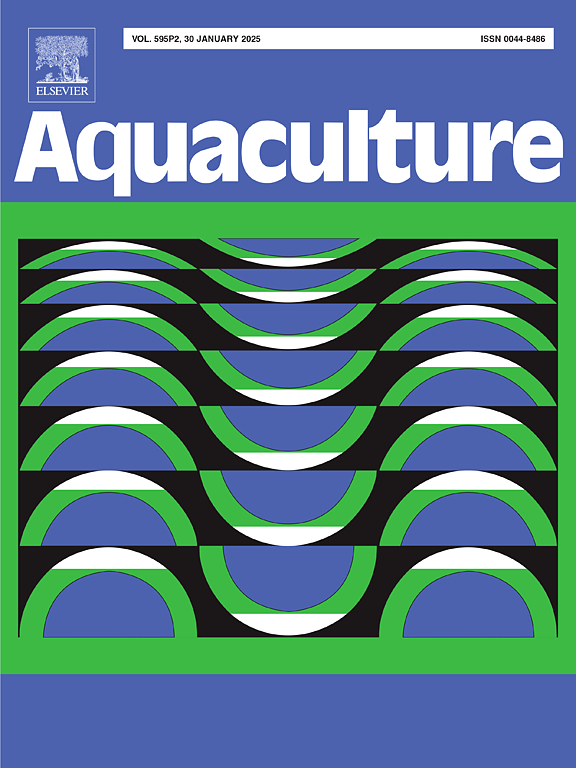缅因州湾大西洋麦哲伦扇贝养殖挂耳和灯笼网生长技术的技术经济评价
IF 3.9
1区 农林科学
Q1 FISHERIES
引用次数: 0
摘要
在过去几十年里,全球扇贝生产已迅速从野生捕捞渔业转变为水产养殖业。然而,缅因湾大西洋扇贝(Placopecten magellanicus)的水产养殖仍然受到美国和加拿大国内高昂的劳动力负担和成本的限制,特别是在使用传统的灯笼网养殖时。因此,尽管初始投资较高,但为使养殖过程自动化而设计的专门挂耳设备越来越多地用于扇贝养殖,以减少劳动力。在这里,我们使用技术经济模型比较了生产成本、净现值、修正内部收益率、租赁面积要求、自动化挂耳和传统灯笼网养殖的最大年产量、生产周期和市场产品。虽然挂耳需要较高的初始资本支出,但与灯笼网培养相比,它明显更具成本效益;在更大的生产规模、更长的生产周期以及针对内收肌市场时,这些优势更加明显。吊耳的劳动效率与灯笼网栽培的年总产能几乎是两倍有关,在同等年产量下,租赁面积减少了40%。我们建议希望大规模生产扇贝(年产量10万)的种植者考虑针对内收肌产品的自动挂耳。与此同时,小规模种植者(年产量为10万棵)可能需要调整假设,以实现盈利的商业模式。为了在决策过程中帮助种植者,我们包含了一个场景测试应用程序来调整假设以适应他们特定的业务需求。本文章由计算机程序翻译,如有差异,请以英文原文为准。
Techno-economic assessment of ear-hanging and lantern net grow-out techniques in Atlantic Sea scallop, Placopecten magellanicus, aquaculture in the Gulf of Maine
Global scallop production has rapidly transitioned from a wild-capture fishery to an aquaculture industry over the past several decades. However, aquaculture of the Atlantic sea scallop (Placopecten magellanicus) in the Gulf of Maine has remained limited by the high labor burden and costs within the United States and Canada, particularly when using traditional lantern net culture. As a result, specialized ear-hanging equipment designed to automate husbandry processes is increasingly being employed in scallop aquaculture to reduce labor, despite the higher initial investment. Here, we used a techno-economic model to compare the cost of production, net present value, modified internal rate of return, lease size requirements, and labor-bounded maximum annual production of automated ear-hanging and traditional lantern net culture, production cycle duration, and market products. While ear-hanging entailed higher initial capital expenditures, it was notably more cost effective compared to lantern net culture; the advantages were compounded at larger production scales, longer production cycle durations, and when targeting an adductor muscle market. Labor efficiencies in ear-hanging related to a total annual production capacity of almost double that for lantern net culture and a lease acreage reduction of 40 % at comparable annual production. We recommend that growers looking to scale scallop production (>100,000 annual production) consider automated ear-hanging targeting an adductor muscle product. Meanwhile small-scale growers (<100,000 annual production) would likely need to adjust assumptions for a profitable business model. To assist growers in this decision-making process, we have included a scenario-testing application to adjust assumptions to fit their specific business requirements.
求助全文
通过发布文献求助,成功后即可免费获取论文全文。
去求助
来源期刊

Aquaculture
农林科学-海洋与淡水生物学
CiteScore
8.60
自引率
17.80%
发文量
1246
审稿时长
56 days
期刊介绍:
Aquaculture is an international journal for the exploration, improvement and management of all freshwater and marine food resources. It publishes novel and innovative research of world-wide interest on farming of aquatic organisms, which includes finfish, mollusks, crustaceans and aquatic plants for human consumption. Research on ornamentals is not a focus of the Journal. Aquaculture only publishes papers with a clear relevance to improving aquaculture practices or a potential application.
 求助内容:
求助内容: 应助结果提醒方式:
应助结果提醒方式:


